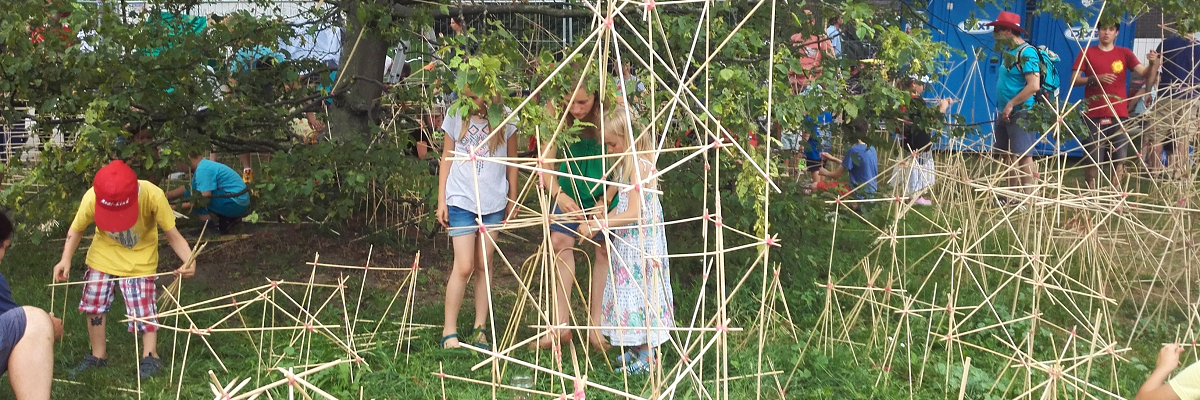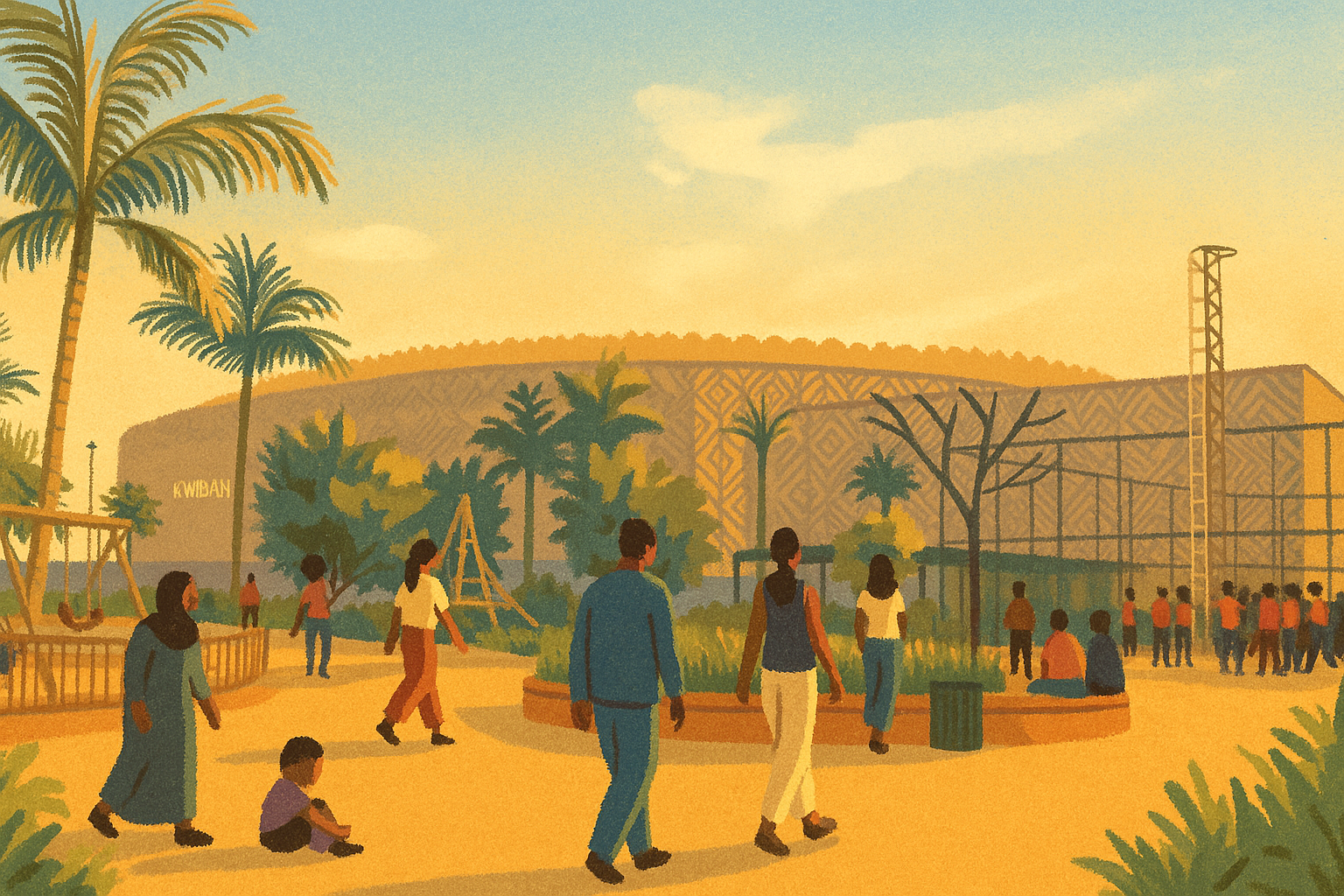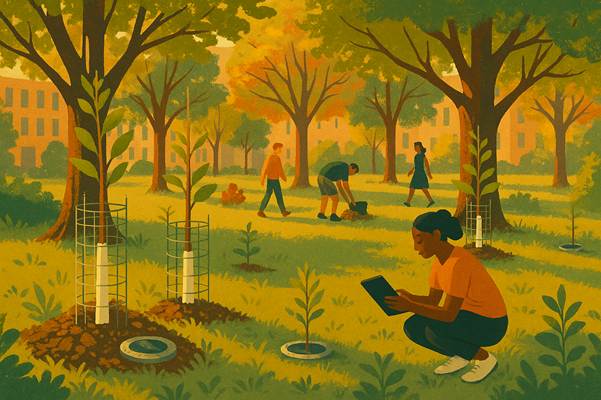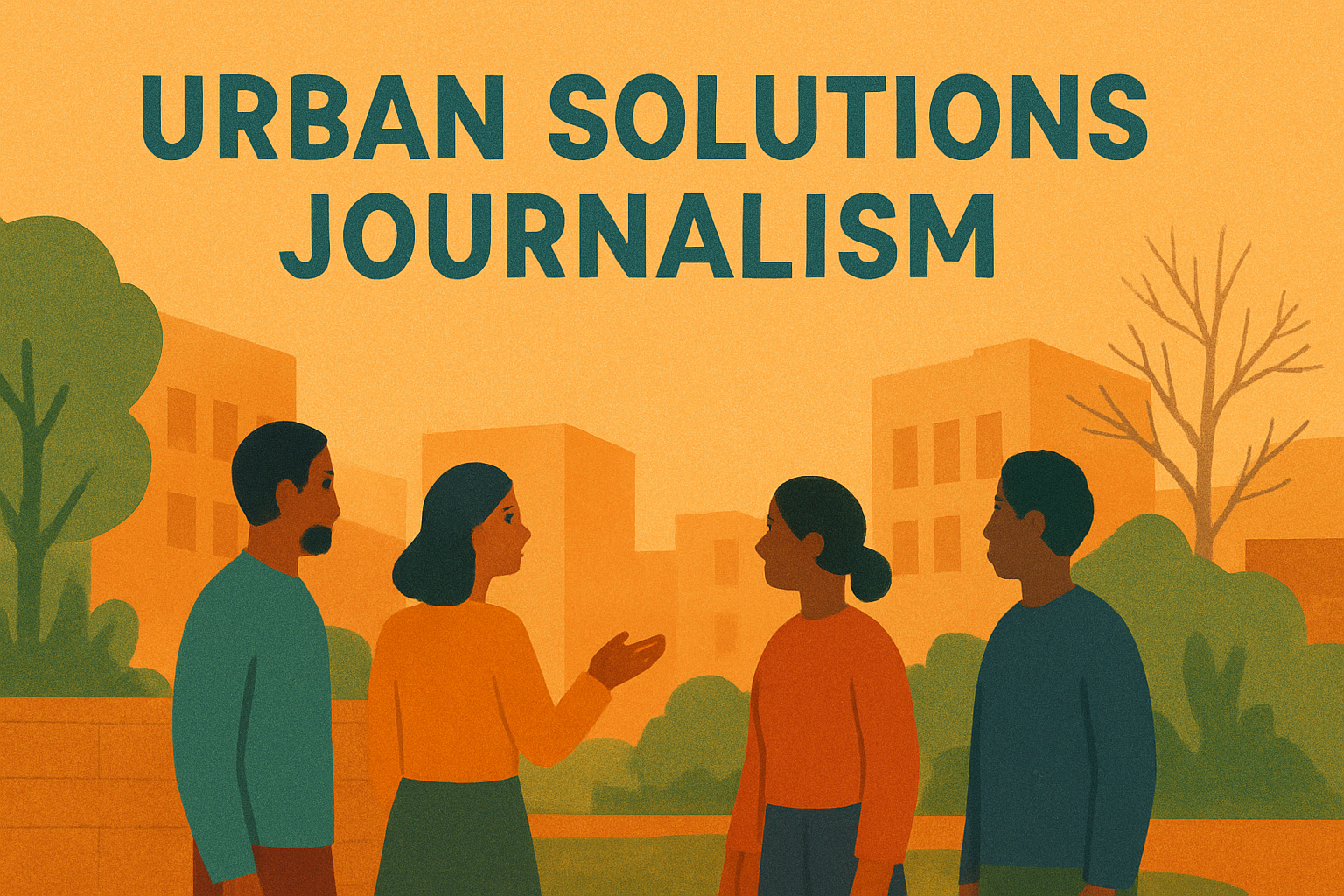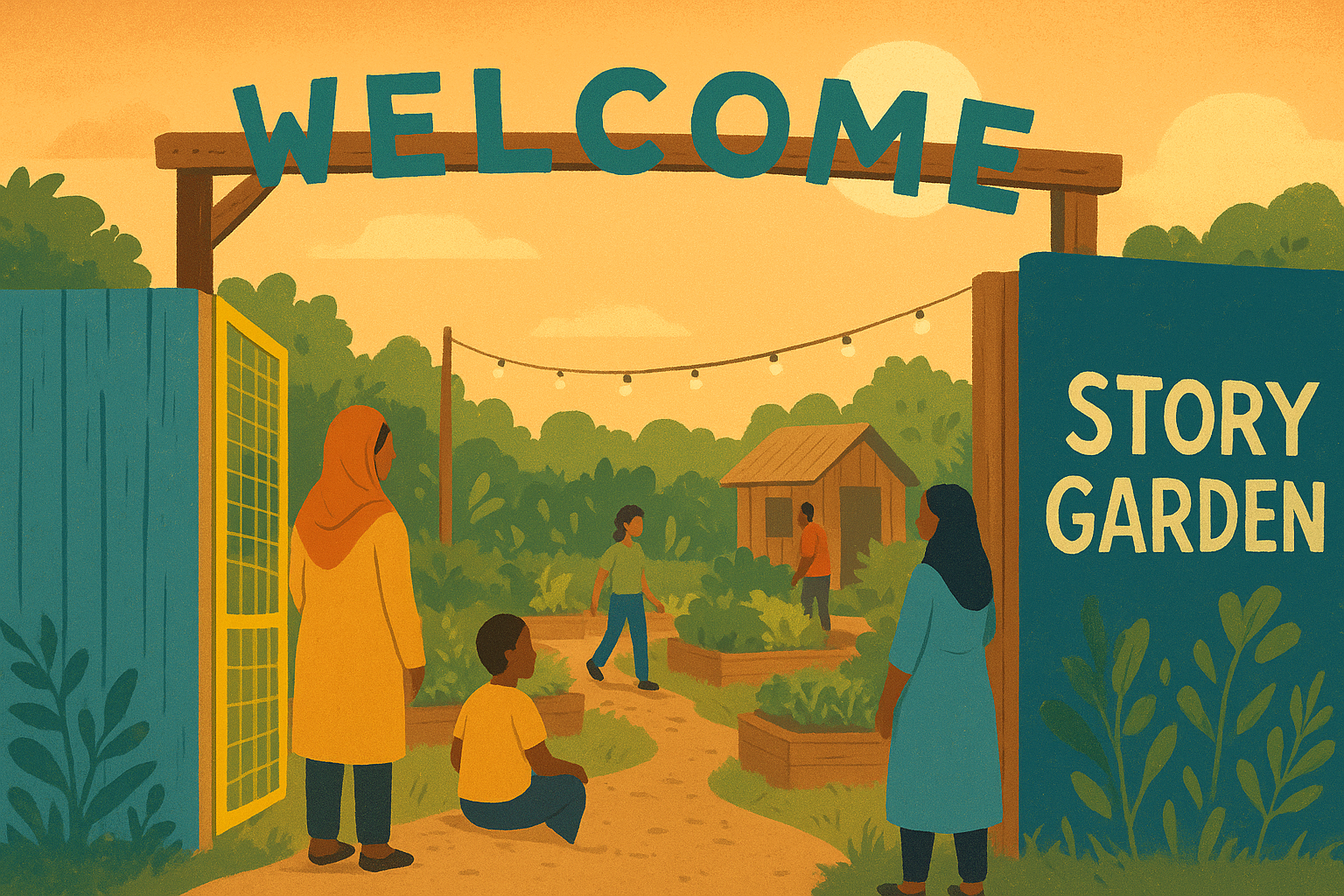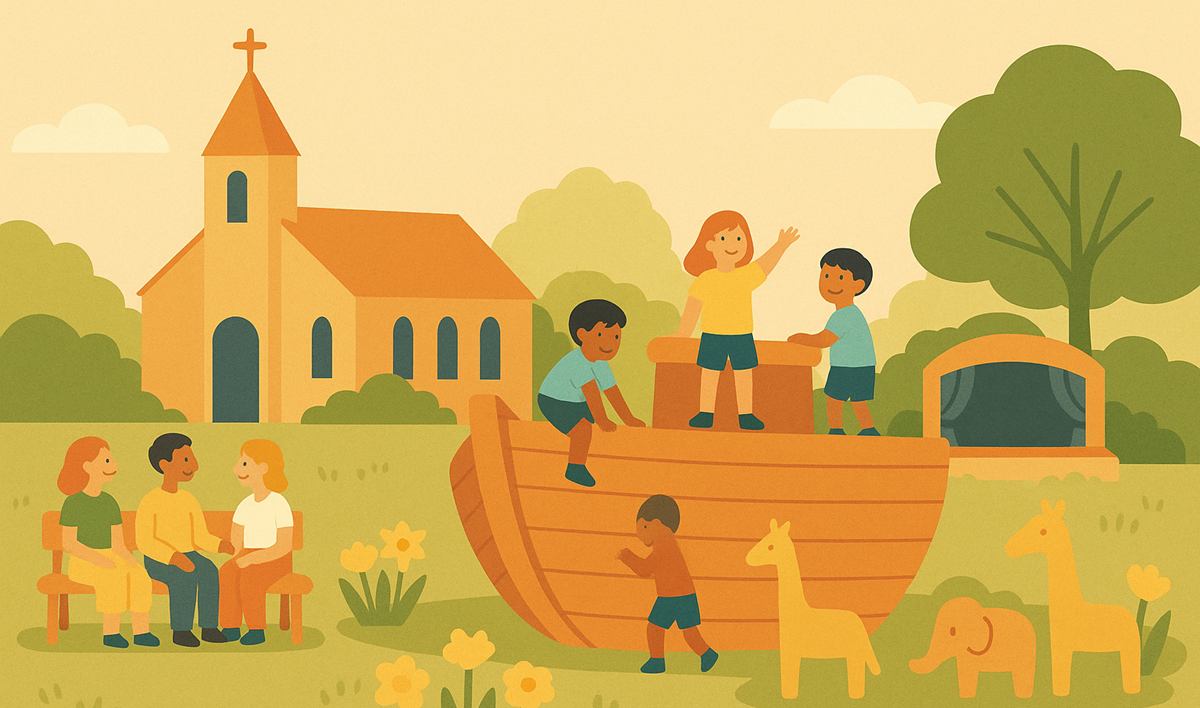Even with all the different ideas around citizen participation in urban planning, one very important part of the population is often not part of these efforts: Children! However, they are crucial (and future) inhabitants of cities and often have exceptionally creative ideas.
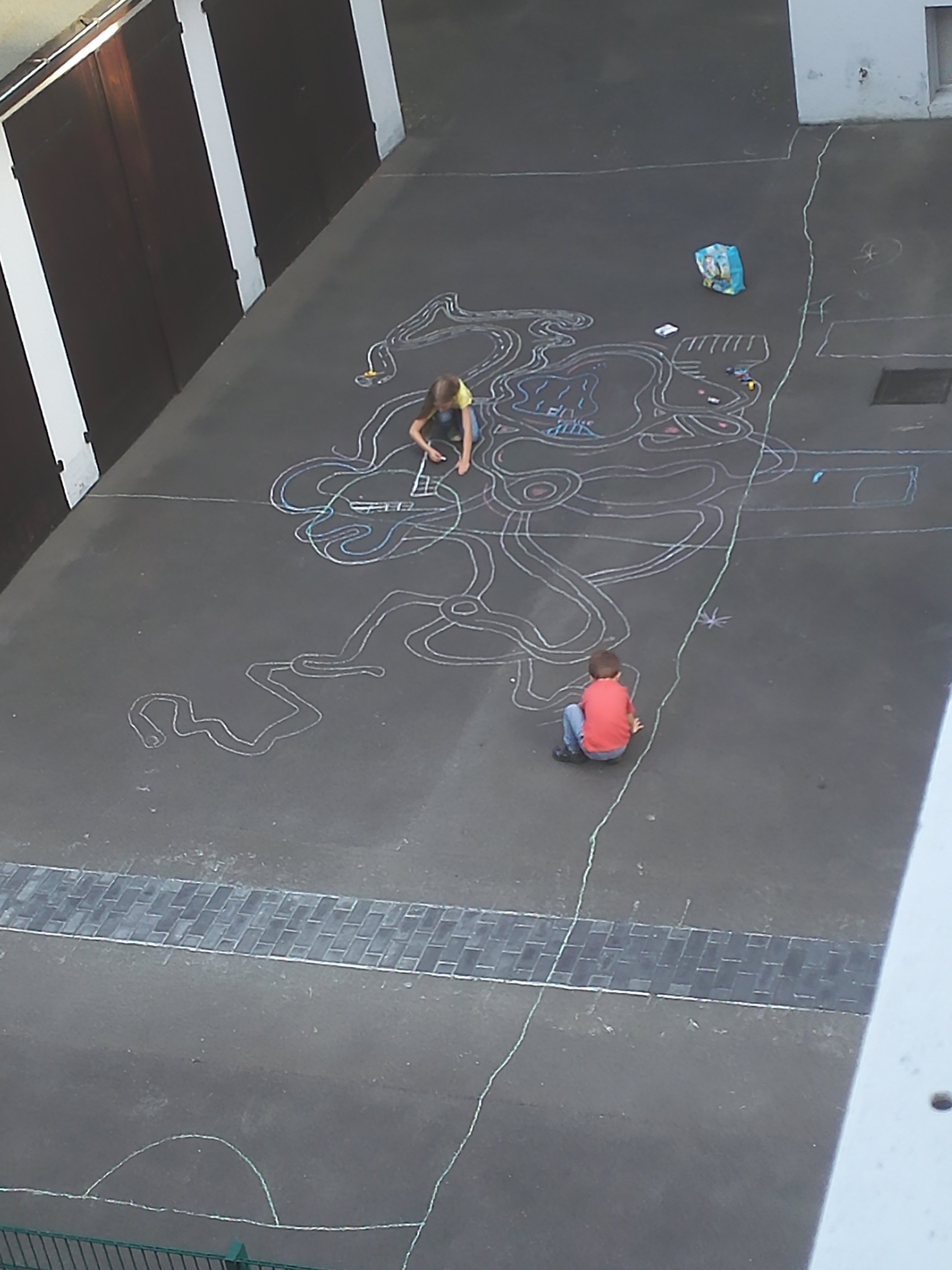
Just looking out of my window, I saw the neighbour’s children creatively inventing a new city with chalk. Increasingly, urban planners recognise the potential of including children in planning efforts. See for example this resource website called ChildintheCity. During an art and music festival in summer 2016, there was a workshop for children, encouraging them to creatively re-invent the city using nothing but sticks (see header picture; source: own picture).
Last year, I had the chance to visit an interactive exhibition in a children’s museum in Berlin. It was called “Platz da! Kinder Machen Stadt” (translating into “Make Room! Children are making the city“).
There are different elements and spaces, all of them children-friendly and related to urban planning. School classes, birthday parties and individuals are invited to discover building sites, planning offices, streets and many other spaces that are open for creative ideas.
Ms Ursula Pischel, the exhibition’s curator, kindly answered some of my questions:
How does urban planning work from a child’s perspective?
You have to consider that children have a completely different perspective on the city, starting with their body height: If you’re only about 1 meter tall and are not yet trained to always pay attention to your surroundings, you focus on the things that are immediately around you. Usually, the bottom metre is the city’s dirtiest space: you see dog’s excreta, waste, graffiti, cracks in the pavement etc.
Also, children cannot grasp the city as a concept. They focus instead on the paths they know, like the way to school or kindergarten. Usually, they are very influenced by structures, colours and directions.
Regarding urban planning, children have a lot of ideas. You simply have to ask them. It usually starts with things like more space for pedestrians on the sidewalks or cleaner streets. In one of our projects, school children came up with this great idea of a mobile pedestrian crossing because they felt unsafe crossing the street.
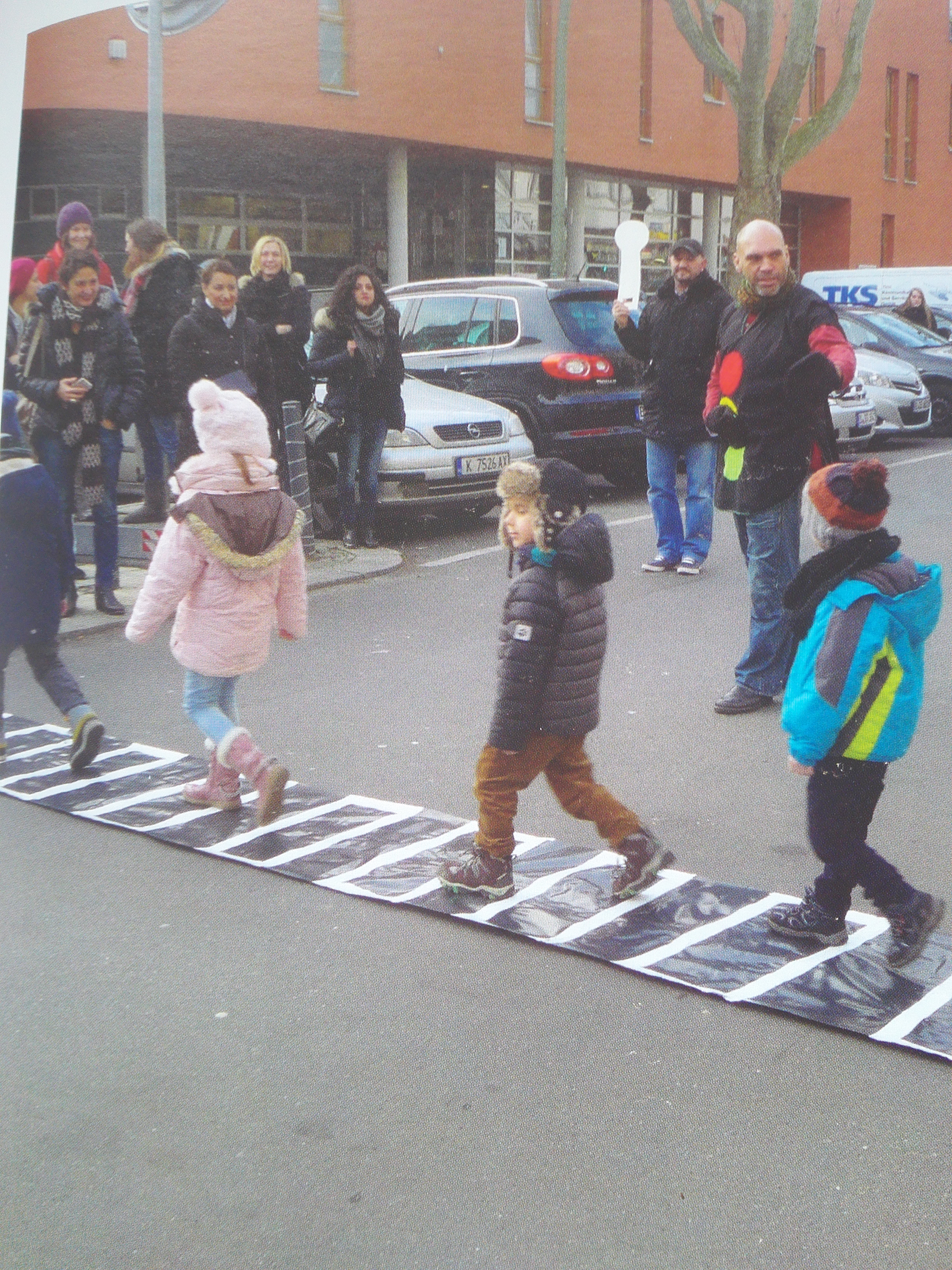
To convey children’s urban planning ideas, we have organised meetings with city councillors and politicians in the past, who usually are very open to these meetings. However, it made the children understand the complexities of urban planning. The politicians explained how it’s not always easy to change certain things in the city. Still, the children felt proud to make their ideas heard.
I think that it is crucial for us as adults to understand how cities work for children and to learn using their perspective. For that, we gave a group of children helmets with video cameras on top and learned a lot from seeing the city in this different perspective.
What is most important to children in cities?
Children are much more focused on form than on function. They have a lot of creative ideas, although it is often hard to implement them. Still, adults are usually too focused on the process and very arrogant in their assumptions. They forgot how to dream.
One more thing we should learn from children is how to explain things in a very clear and simple way and how to ask why things don’t work.
Once encouraged, it is very important to most children to have a voice in designing their city.
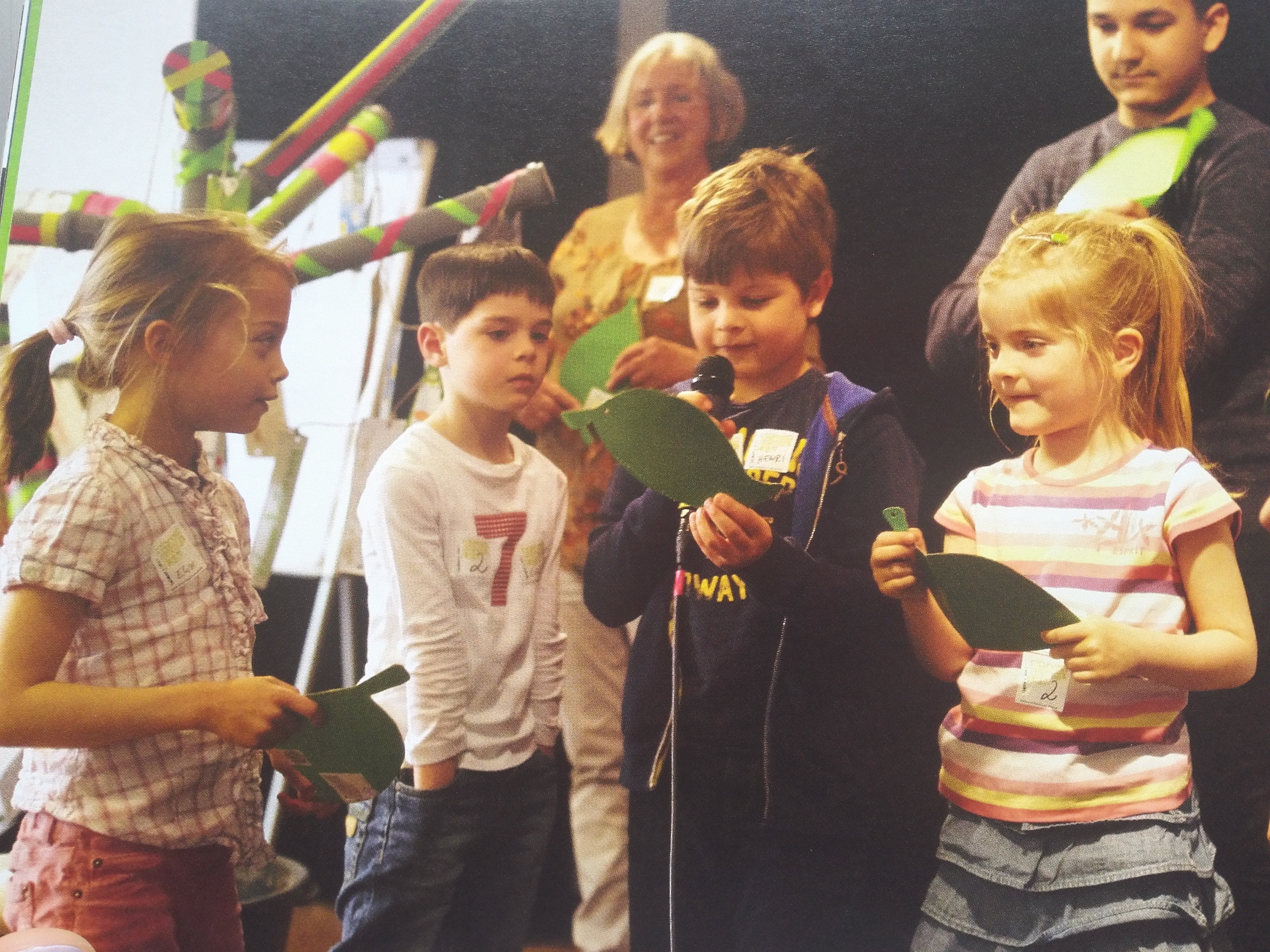
In our exhibition, one of the most common topics is transportation. Many children would like to fly and have little planes as a mode of transportation. They express a desire to flee from the traffic chaos of the city and determine their own movement.
Speed in transportation, green areas and public spaces and the presence of animals are also priorities for children.
Interestingly, even in very young kids we detect the idea of the city as something that gives you freedom, but that comforts and protects you at the same time.
Do you think children should be involved in official urban planning?
I think it is very important to foster a consciousness from an early age on about urban planning ideas. Small successes like presenting your ideas to a city councillor are very beneficial for that.
It is crucial to include children in some processes and to learn from them, since their perspectives are often very enriching.
However, it is hard to involve children on a more permanent basis in urban planning, starting with the hurdle of communication and “real world constraints”. There are some very interesting projects and I think it is important to encourage school children of all ages to participate in them. So far, we’ve had 190,000 children in our exhibition over the course of 3 years!
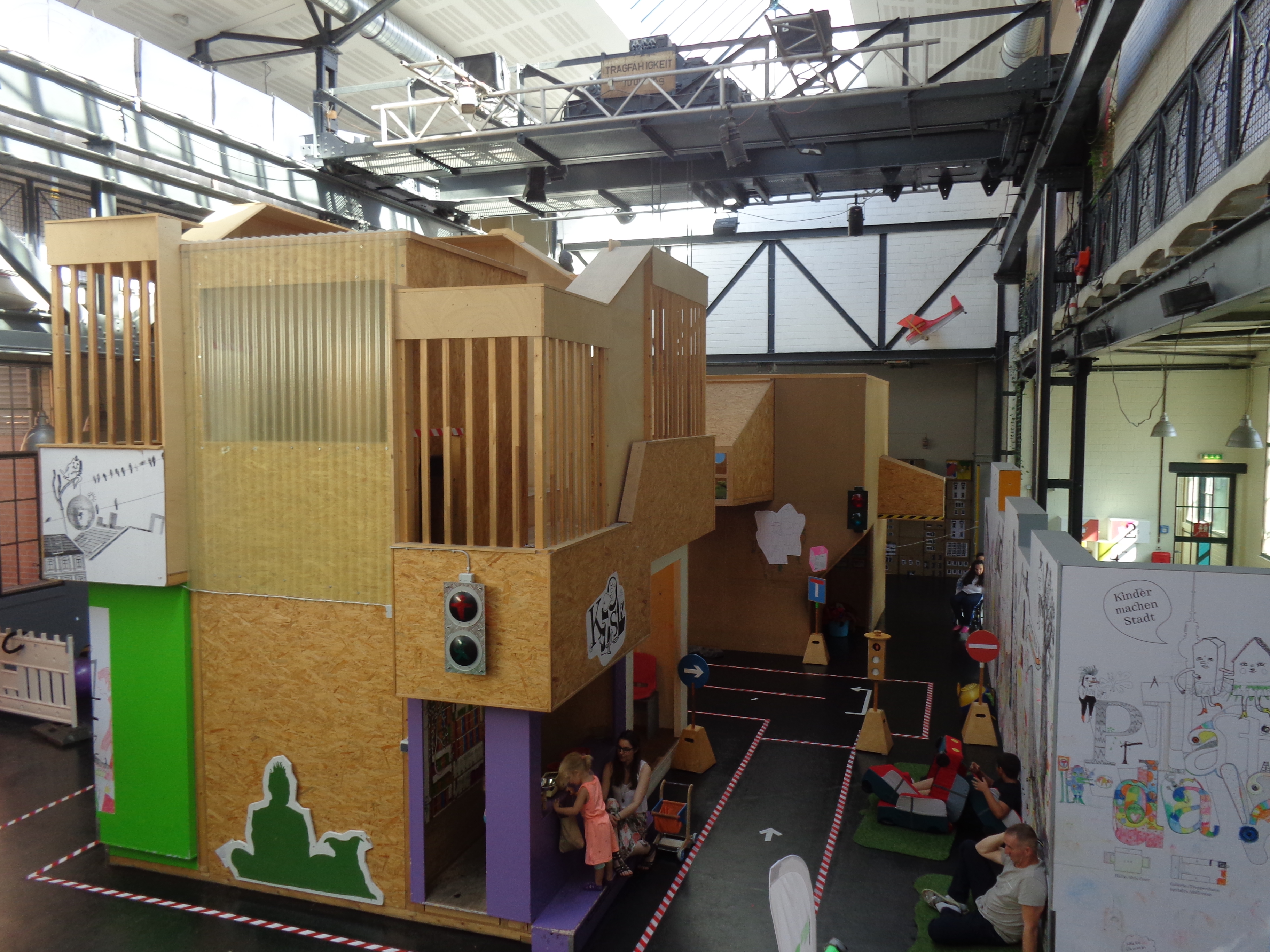

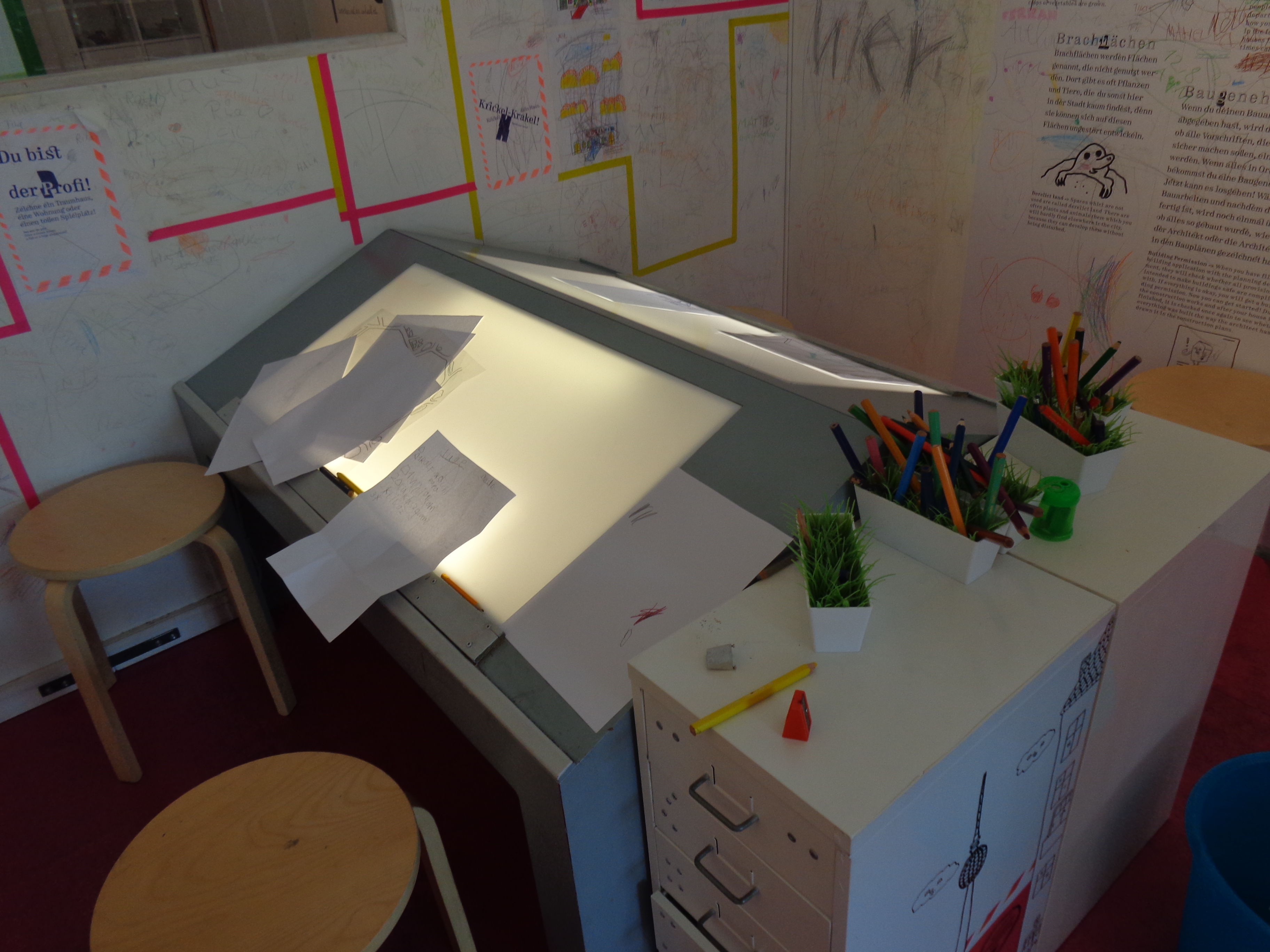
Thank you very much to the Children’s Museum for answering my questions! The exhibition is still on until April 2017 for those of you in Berlin.
What do you think can or should children contribute to urban planning and design? Find some inspiration in this related article:
Please share your thoughts and ideas in the comment section below and don’t hesitate to contact me (laura@parcitypatory.org).

